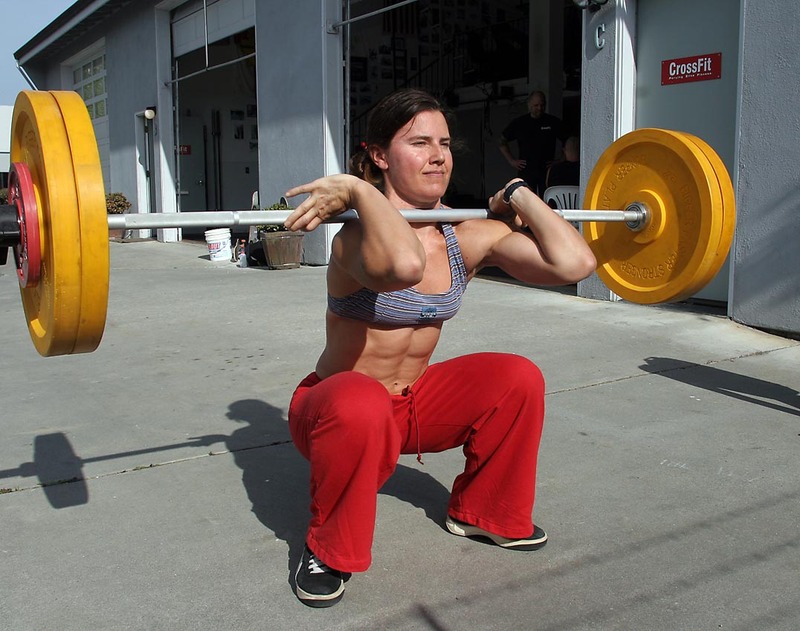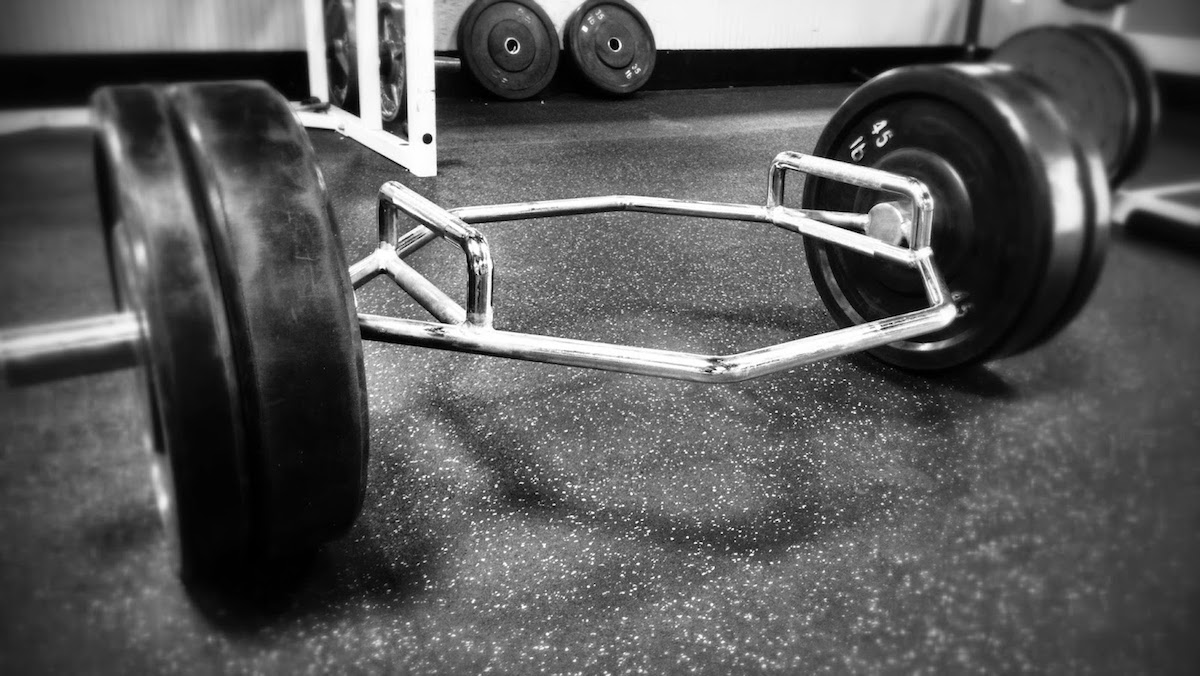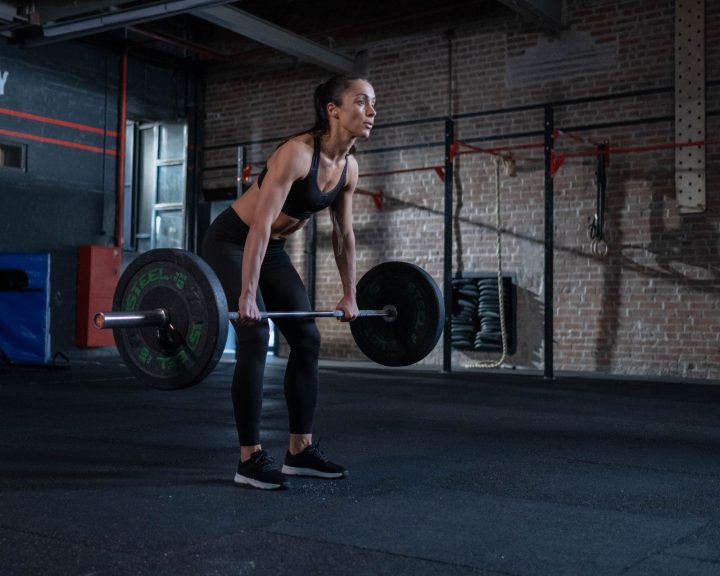In two previous posts I spent a lot of time covering different ways to teach the clean. Olympic lifters use a wide range of assistance exercises to improve their cleans. Many of these have made their way into strength and conditioning. The reality is that some of these exercises could have a role in an athlete’s strength and conditioning, but many are unnecessary unless you are training competitive weightlifters. I’m going to take the next few posts to cover these exercises.
With this post we’re going to cover cleans from the hang and cleans from blocks. I’ll start off discussing each variation and then I’ll share my thoughts about whether or not they have a role in athletic strength and conditioning.
Cleans from the hang:
Cleans from the hang are cleans that are not done from the floor. They involve moving the bar to a starting position that aligns with part of the lifter’s body. The most common positions are cleans from mid-thigh (also called above the knee), from knee height, or from a position just below the knees. In weightlifting shorthand these lifts are typically written as follows:
- Cl., h, AK (clean, hang, above the knee)
- Cl., h, K (clean, hang, knee)
- Cl., h, BK (clean, hang, below the knee)
This variations can be done with the full (squat) clean or with power cleans. When working with weightlifters I typically write the workouts to detail out which type of clean we’re doing, so the workout might read:
- P. Cl, h, AK (power clean, hang, above the knee), or
- F. Cl, h, AK (full clean, hang, above the knee)
This variation has three purposes for a weightlifter. First, they represent the top down teaching progression for the lift. Lifters initially learn the lift from the above the knee position, then move the bar down so that it is at knee height, then move it down so it starts out below the knees, and finally the lift is learned from the floor. This means that over weeks and months the complexity of the lift is gradually increased while the other phases are reinforced. As the bar approaches the floor we are able to summate forces allowing us to lift more weight than when it is from above the knee.
Second, while training the clean this variations also allows for the muscles of the back and posterior chain to be strengthened. This is done because the bar has to be held in those positions. This is a great sport-specific way for a weightlifter to improve their lift.
For example, let’s say we have an athlete who rounds their shoulders forward when they try to pull the bar around their knees. Because of this they aren’t able to get a very good second pull and are having to jump forward to receive the bar. We can use the clean from the hang, with the bar at below the knee height, to strengthen the athlete during this part of the lift.
Third, it allows weightlifters to work on technique in specific phases of the lift that we can isolate. For example, let’s say we have a weightlifter that is bumping the bar off their thighs (as opposed to brushing) as they move into the second pull. This is leading to the bar being swung away from the weightlifter. We can address this by taking a step back and having the lifter work on the lift from above the knee (where they don’t have the option to bump the bar off the thighs). After this we’d move it to knee height and reinforce what we did from above the knee, etc.
How are these lifts programmed? Just like with cleans they are generally done for sets of 1-6 repetitions with full recovery between each set. If the primary lifts are done then these are assistance exercises which would be done second. If this is the focus of the training then they are first.
They are also done at a percentage of the primary lift, it is not something that weightlifters take maxes on. A good weightlifter can perform a hang clean with the bar above the knees with 75-85% of their clean maximum.
A workout that uses these lifts as a supplement might look like:
Cl + Sp. Jerk, 5×3+2×80%
Cl., h, BK, 3x3x70%
Cl. Pulls, 3x6x80%
F. Squats, 3x6x85%
In other words, clean + split jerks, hang cleans (below the knee), clean pulls from the floor, and front squats.
A workout that uses these lifts as the main lift might look like:
Cl., h, K, 5x3x75%
Sp. Jerk, 5x3x75%
Cl. Pulls, 3x6x85%
F. Squats, 3x6x85%
In other words, hang clean (knee), split jerks, clean pulls, and front squats.
Cleans from blocks:
When performing cleans from blocks, an athlete will use different starting heights just like the cleans from the hang. The difference is that the bar rests on something, traditionally large wooden boxes called blocks. These generally come in different heights to equate from lifting the bar from above the knees, knees, and below the knees. This can be done with power cleans or with full cleans. The shorthand looks like:
Cl, b, AK (Cleans, blocks, bar at above the knee)
The advantage to this variation is that the athlete is able to work on parts of the lift, from different positions, without having to hold the starting position. This means that back strength isn’t a limiting factor with these lifts. It sill allows the athlete to work on different parts of the lift depending upon
One of the disadvantages with this variation is also an advantage. Unlike doing the lift from the hang, which allows the lifter to perform the lift from positions relative to their body, the blocks come in specific sizes. This means that even though the lift is meant to be a lift from above the knee, or the knee, or below the knee, the athlete’s size relative to the size of the blocks might mean that it is not an exact fit. While this is a disadvantage, it also requires the lifter to learn to adjust to different positions – which is not a bad thing!
Like hang cleans, cleans from blocks are done at a percentage of the full clean or power clean’s maximum. Like hang cleans, these are typically done at between 75-85% of the full clean/power clean maximum.
Using these lifts:
For the most part, strength and conditioning coaches are not training Olympic lifters. When these lifts are used it is for the purpose of making athletes more explosive so that they can potentially apply that quality to the performance of their sport. In other words, the exercises are general training designed to help give the athlete the physical tools that they need to be successful at their sport.
Also, unlike weightlifting coaches a strength and conditioning coach may be working with 40-100 athletes at one time, with limited staff, and with very limited facilities. For example, how do you incorporate the Olympic lifts with 40 athletes at a time, one coach, and only four platforms? This is real life for strength and conditioning coaches. In addition, time is really limited for strength and conditioning coaches. In high school you may only have two hours after school for all the teams. In college the NCAA regulates time. So this means that exercises need to be chosen very deliberately to get the most return for the time. With all that in mind, below are some thoughts about using cleans from the hang and cleans from the blocks in an athletic strength and conditioning setting.
Cleans from the hang are conducive to those athletic strength and conditioning settings that I mentioned above. Beyond the bar and plates they don’t require a lot of specialized equipment. This means that a large number of athletes can perform the lifts at one time. A coach is able to walk up and down the room and coach the lifts. Also, these variations are simpler to perform than the lift from the floor so these can become a mainstay of an athlete’s training. Finally, these variations fit any size athlete – tall or short. Any athlete can move so that the bar is at mid-thigh, or knee height, or below the knees.
Cleans from the blocks, on the other hand, require specialized equipment. These are the lifting blocks. If a wide variety of starting heights are going to be used then several sizes of blocks are needed for each station. This severely limits how many athletes can perform the exercise at one time. In addition, the blocks are not “one size fits all.” Twelve inch blocks will have a different training effect for short athletes versus taller ones. In addition, blocks are expensive. A set of blocks can easily go for $1,000 each. Or a coach could build their own out of two by fours and plywood, but that still takes time and money. Some half racks and squat racks can be adjusted so that cleans from different heights can be done from them, but they have the same problem as blocks with regards to taller and shorter athletes and then you have tied up the squat racks to do cleans (i.e. no one can do squats while the cleans are being done) which is a huge traffic flow problem with a large number of athletes. So for my money cleans from the blocks aren’t the way to go in an athletic strength and conditioning program.



